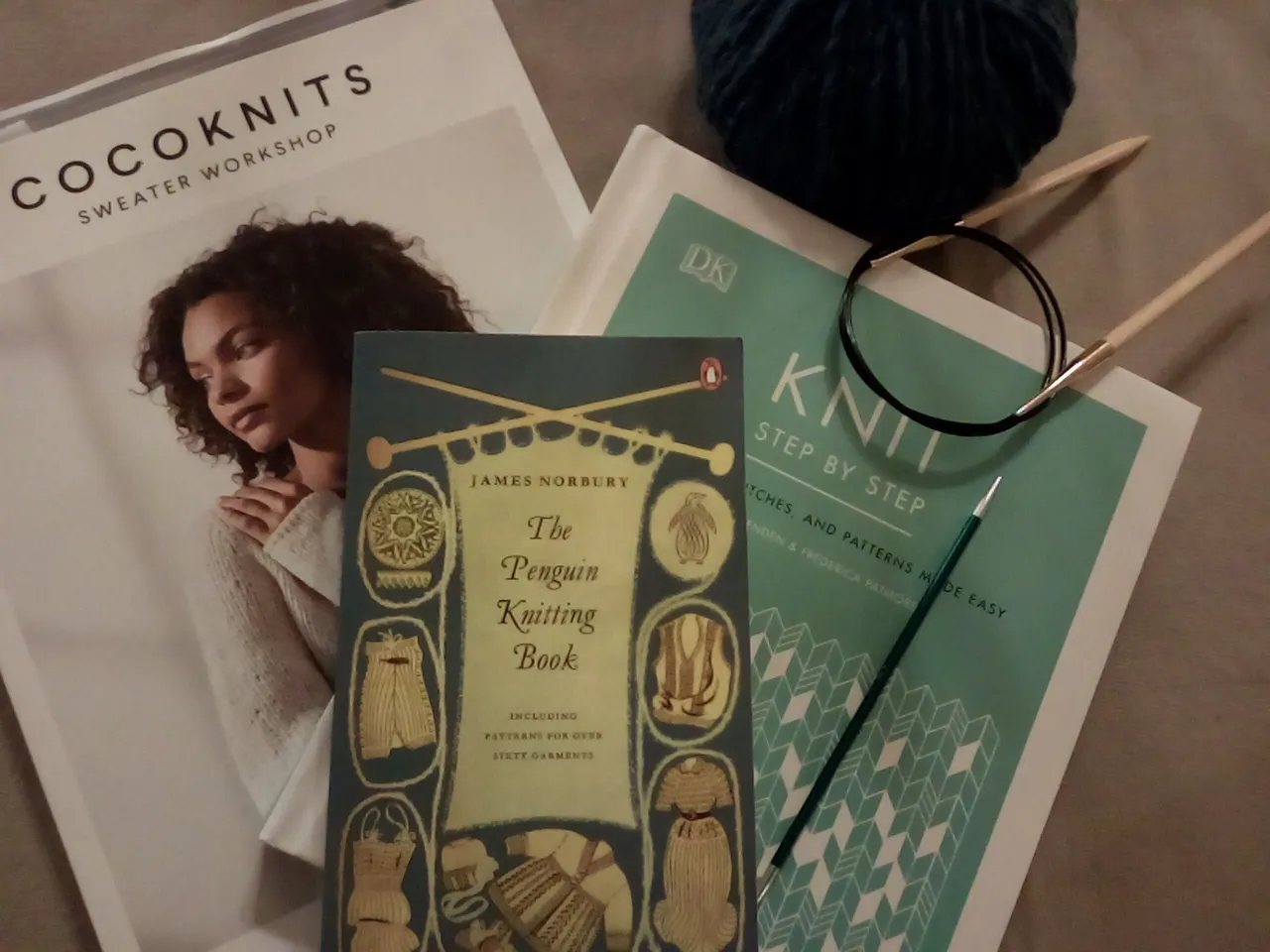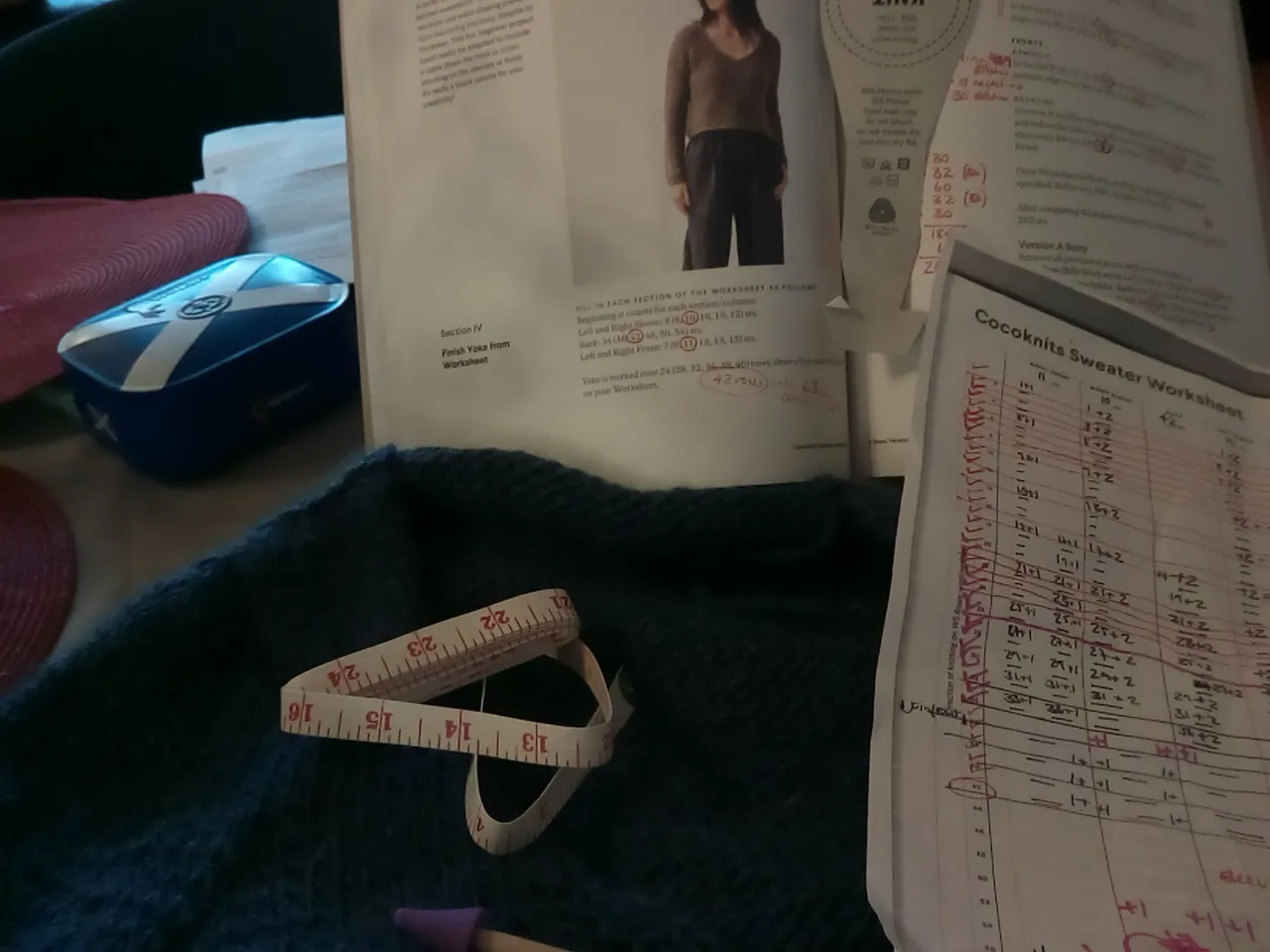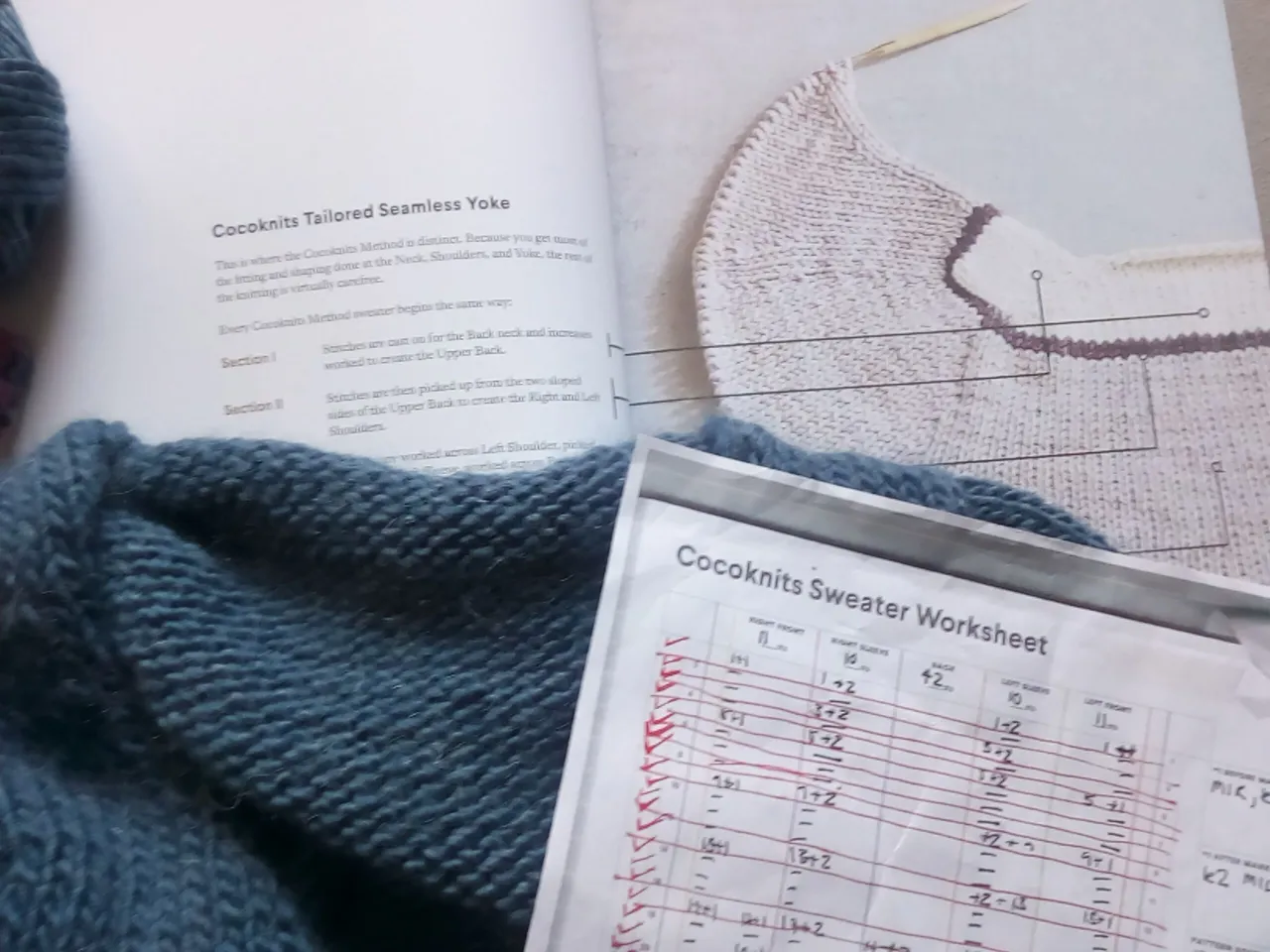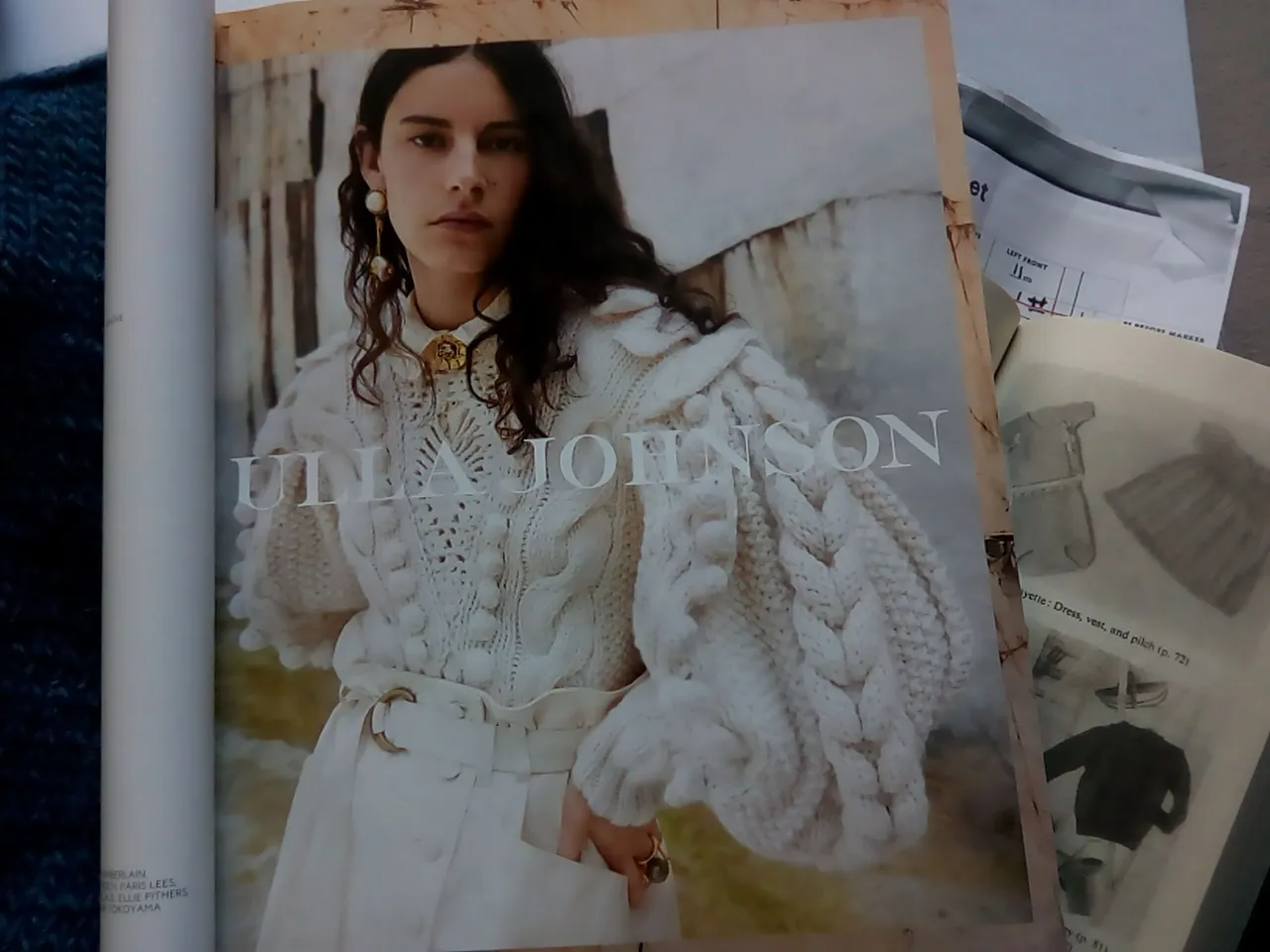
After a summer of not knitting, I haven't stopped over the past few weeks. I was inspired by this post by @neumannsalva and immediately bought Cocoknits Sweater Workshop from a UK supplier. This year, I have been trying to build my understanding about basic knitted sweater construction (or, in my very English case, cardigan construction) so I can design and knit garments that a) fit me as I want and b) show off my true wild, flamboyant conservative, don't-frighten-the-horses nature. This book was a must have to help me get my head around how to construct two-dimensional garments around a three-dimensional, in so many dimensions, body.

I've knitted the equivalent of a muslin or toile for this pattern. I've tried blending pattern sizes to take account of my very small shoulders and upper body and much larger bust and lower torso measurements, and cropped the sweater to take account of my small torso to legs ratio. (If you want to see some wonderful versions of very cropped, beautiful sweaters, have a look at this Heather and Hops cosy jumper talk podcast).
Overall, it was a good experience and I've learned a lot. I've completed the body, but not the sleeves, and I've decided not to finish this version of the sweater. I've decided I want a cardigan and I love the very casual, feminine nature of the top-down sweater I knitted a couple of years ago. I'm going to unravel this sweater and use what I've learned to knit a straightforward raglan cardigan with a different treatment for the underarm and with waist shaping.
The Cocoknits Emma Sweater - Pros and Cons

The Cocoknits Sweater Workshop has really clear explanations and diagrams about how to construct the neckline and tailored yoke.
The basic, introductory, Emma sweater has an interesting construction. It has hardly any sewing together (the point at which I lose interest), except for a very short seam under the arms. I found I could knit the whole of the initial construction without breaking the yarn (joining yarn is nearly as hateful as making up, a euphemism for and now we sew). The construction of the back neck provides sturdy selvedges at either shoulder which stabilises the garment and would be especially useful for working with slippery, silky yarns with a lot of drape.
I loved the sweater worksheet - a template that you can photocopy is provided at the back of the book. It allows you to set out the increases on each row, in advance, so you only need to look at one line to check what you are doing, rather than flicking back and forth between pages in the book, trying to make sense of paragraphs that begin with "at the same time ...". It's a very nice tool for recording adaptations - as in my case where I was blending from one size to another. You can also use it for setting out your own patterns.
A major advantage of top-down constructions is that you can try them on as you go. I decided that I wanted a deeper arm-hole than the one in the pattern, and more increases across the bust. I knitted more rows after the armhole cast on before I started waist shaping to allow extra volume to cover a larger bust measurement, and then fewer rows between the waist shaping decreases and increases to allow for a shorter torso (back waist measurement). The waist shaping was perfect and you can record all your changes on the worksheet. With a little bit of practice, you could record the whole summary for the pattern on the one A4 worksheet, so you would only have a piece of paper to carry in your project bag, rather than the whole book.
The major cons about this pattern are:
- although I was knitting in gauge, the shoulders didn't fit (the good news is that you find that out right at the beginning of knitting, so you can adjust before you knit a whole garment). I haven't worked out yet how I would need to adjust this to get the correct fit - it may be as simple as knitting the larger size.
- the other big problem I had was the increases in every row for the back neck - this led to some puckering. I have been wondering it this could be avoided by having four increases in a knit row and none in a purl row. I didn't like the style of increases either. It took me a while to understand how to do it (I found this podcast by Arne and Carlos which explains the technique). The other problem I had with it is that it leaves a hole in your knitting. I preferred the M1L M1R technique.
- the sweater is knitted in stockinette or stocking stitch, which curls unless you put an edging using rib or garter stitch. This property of the stitch has its uses, but I found it a problem in this sweater - I ended with a roll of fabric around my middle.
It is a really useful reference book - I've enjoyed looking at the different techniques and working out how to apply them in different designs and with different yarns.

For the first time ever, I treated myself to a copy of Vogue this month where I saw this fabulous sweater by Ulla Johnson.
Aren't the sleeves gorgeous? I was very interested in the flaps and epaulettes on the shoulder - one of the reasons I wanted to try the Emma sweater in Cocoknits as it had a sort of shoulder strap that I thought would make a great foundation for added shoulder decoration. Here are more pictures of the Ulla Johnson Verena sweater with more detail about the fabulous sleeve construction. I also loved this stunning Ulla Johnson Frida knitted tunic.
Live Chat
It's Hive Power Up Day and First Monday Live Chat. You'll find the link to the Live Chat in the Needlework Monday discord - see you at 7pm GMT!

Saturday Savers Club
I run a savings club every Saturday over on the @eddie-earner account. We're aiming to save £670 ($800) by the end of the year using the 365 day savings challenge. You can join any time of the year and set your own goals and plans (some people are saving Hive, others Bitcoin, some their local currency). We share savings tips and there's a free giveaway every week.
Wednesday Wellbeing Club
I'm hosting a Wellbeing Club on Wednesdays from 11 August until 24 November 2021 in the Natural Medicine community. It's for anyone who wants to make a lifestyle change. We have a weekly check-in and share wellbeing tips, and a weekly giveaway. Here's the back story and the launch post with more information. Everyone is welcome.
First Monday - NeedleWorkMonday Community
Every First Monday of the month, I host a Live Chat for an hour from 7pm for the Needlework Monday Community. Bring your knitting, sewing, crochet (or nothing, that's okay, too), a nice cup of something, and join us for a relaxing hour of chat. Find our more in this post
Three things newbies should do in their first week and, for most things, forever afterwards!

